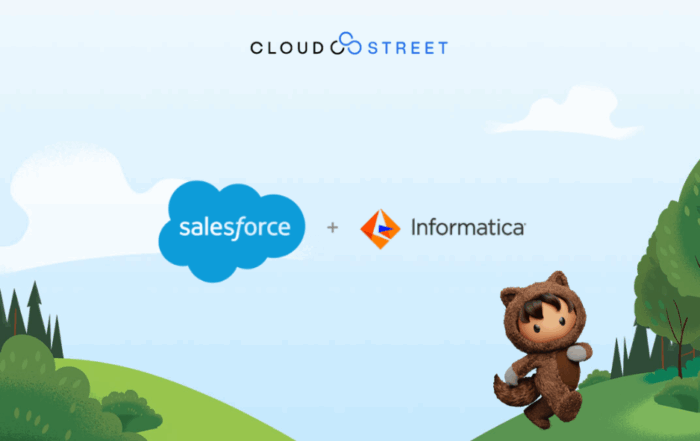What Are Opportunities in Salesforce? How to tap them effectively?

As a business, one of your main aims is to tap the right customers and persuade them to do business with you. Right from striking up a conversation with them and creating and nurturing their interest in your product or services to making a sale and then following up with them is a task that takes up a lot of time and effort. If these efforts are not streamlined or planned with precision, all of them can go in vain.
This is why most businesses now take the help of automated systems like Salesforce that allows you to keep a comprehensive record of even the smallest details of customers – potential, existing, and future ones. These details help you make your sales process much more efficient and create more business opportunities.
Opportunity in Salesforce is an important aspect of any sales process. As Nick Boardman, CEO, CRM Crew explains it, “Opportunities are the main sales hub inside your Salesforce system. This is where we can manage our sales, each stage of our sales process and then we can close our sales. Opportunities are different from leads as leads are the very beginning of the sales while opportunities provide a much wider scope for converting leads into business.”
Why are Opportunities important for your business
As every business deals with multiple customers in different stages, it is easy to lose track of the important ones, which are the active customers or deals that are still ongoing. These deals are called Salesforce Opportunities.
Usually, these are customers who have been contacted and have shown interest in your business. However, they haven’t yet fully engaged with your sales managers and the deal is not closed yet.
Since there is a certain amount of ambiguity and uncertainty attached to any Salesforce Opportunity, it is extremely important to keep track of them. An opportunity can swing either way. If it is left unattended, it can be lost and if it is tended to properly, it can be converted into business.
So, if you wish to maximize your sales process and enhance your business, keep a keen eye on your Salesforce opportunities and opportunity stages to ensure that all your potential and existing customers convert into business.
The fact that nearly 23% of companies globally utilize Salesforce indicates just how important it has become as a tool. Not just that, it has been observed that companies using Salesforce make decisions 38% faster with 58% of them getting their payback in less than a year.
Advantages of Salesforce Opportunities
Once you have initiated a conversation with a potential customer, keeping them engaged and interested in your business is the next step. This is what Salesforce Opportunities help you do. That apart, there are several other benefits they provide:
Help track deal changes
Keeping track of every and any kind of deal change is one of the biggest advantages of an opportunity object. Knowing any changes in the deal will help sales reps to concentrate or focus on them more, enhancing the chances of converting the opportunity into future sales.
Predict revenue generation
Another benefit of opportunity object is that it helps in predicting just how much revenue you can generate through them. Knowing how much you can make from an opportunity will help your sales teams to determine the kind of attention and prioritizing it requires in order to close a deal.

If you comprehensively predict the total amount of revenue from all the opportunities, you will be able to calculate just how much business you are likely to do. This is hugely beneficial information to take your business efforts in the right direction.
Help you track competitors
If you attach your competitors to your opportunity object, your sales reps will easily be able to track the competitors through the entire sales process. This will help them decipher your competitor’s strengths and weaknesses and develop sales processes that are unique in their proposition and attract your customers more.
You can also track any loss of sales or Salesforce opportunities to your competitor and realign your sales processes accordingly.
Track your products
Assigning your products to your opportunity object allows you to keep track of which of your products are selling more and the number of sales. By having this information, your sales reps can concentrate on products that are bringing in more revenue to further enhance business sales.
Through in-depth analysis of product trends, you can also predict market trends and redevelop your sales processes and sales strategies in the best way possible. The more defined your sales process, the better are your chances of winning a qualified lead.
Salesforce Opportunity Stages
Sales processes are designed in such a manner that every deal moves through a number of stages. From being tentative and apprehensive to becoming confident and finally closing the sales, there is a long process that sales reps must follow through.
Similarly, in Salesforce, opportunities also go through different opportunity stages as per the tasks assigned to them before a sale is completed.
These opportunity stages can be classified into:
- Prospecting
- Proposal or Price Quote
- Negotiation or Review
- Closed or Won
- Closed or Lost
Every individual opportunity stage can be further classified into the following types:
- Open: These are deals that are still going on
- Closed Won: This is a successfully closed deal where no more work is going on
- Closed Lost: This is a lost deal where no work is going on
In short, opportunity stages define and describe all your sales processes and help you keep track of what is going on. Ben McCarthy, Founder, Salesforceben, says, “Salesforce Opportunity stages help users manage the sales cycle with a customer by moving them through pre-defined steps. This not only helps users manage the sales process, but also helps with pipeline visibility and accurate forecasting.”
Tapping Salesforce opportunities effectively
Now that we know the importance and benefits of salesforce opportunities, it is important to follow some best practices that will help you maximize its impact. Here’s how you can do it:
Clearly define opportunity stages
In order to maximize your sales process, you must first make a transformation to Salesforce, which is often seen as the foundation step towards every other best practice. This is where you must define the opportunity stages that will tell you where your deal is in the sales cycle and how close it is to completion. This way you can further define where your sales team needs to concentrate.
Before you define the opportunity stages, ask yourself a few questions like which opportunity stages you need, do you have unique sales processes for different opportunities, and what should be done in every opportunity stage.
Opportunity is a negotiation, use it so
At the core of it all, every opportunity is like a negotiation that gives you a chance to predict how much business it will bring. With every opportunity in the Salesforce object, you must store all the information related to the opportunity like the relevant stakeholders, all communications, and the length at which the interaction/negotiation has happened with the potential customers.
This not only gives you information about the value your opportunity in Salesforce brings as the deal progresses but also about the deals lost. This loss of opportunity can come in handy when you are trying to improve your sales processes and develop a new sales strategy for better results.
Collect and collate all necessary information
All opportunities bring along a heap of information that must be stored and collated for future use. You must develop steps for your sales reps so that they can collect all important information without missing out on anything. Not just that, they must then provide this information to businesses so that it can be utilized positively.
Use Opportunity teams to good effect
In the case of bigger deals, it is likely that multiple people are involved in the process of closing it. There could be legal advisors, pre-sales reps, sales managers, business development managers, etc working on the same opportunity.
By using Opportunity Teams, you can allow all users to modify, add, and delete access to different team members. This can also be used to attribute the right roles to different team members so that everyone can contribute to the best of their ability.
Use validation rules to the maximum
As we know, opportunities are all about heaps of data about customers and no business would want to lose that kind of important customer information. Validation rules help your opportunity team to identify the missing links or information so that you create more qualified leads and do not miss out on anything.
Use Contact Roles and Your Products
Any sales process involves speaking to more than one person from the same team of customers. Contact Roles help you identify which contact is your primary source and which ones are secondary. This will help your opportunity team to contact the right person for further interaction and enable a more efficient lead generation process.
While contacts are important, you must not forget to highlight your products as this is where your monetary value is attached. All information regarding your products must be mentioned and highlighted in Salesforce Opportunities to maximize their potential value.
Frequently Asked Questions About Opportunities in Salesforce
Why are Opportunities in Salesforce important for your business?
Sales processes are extremely complicated and it is very easy to lose track of your customers and leads that have the potential of converting into revenue. This is where Opportunities in Salesforce come into the picture.
They help you keep track of all potential opportunities and all related important information so that you never lose track of convertible leads.
How are Opportunities in Salesforce different from leads?
A lead can be described as a potential customer who has shown a certain degree of interest in your services or products while an Opportunity is a deal that is still going on with details about the products, likely closing date, etc in the offing. Leads can’t be used to predict sales or revenue generation, while opportunities can be utilized to do so.
How can the opportunity stages be defined?
The stages are usually described by the sales reps that reflect the progress of the deal. They can be classified into – Prospecting, Proposal/Price Quote, Negotiation/Review, Closed/Won, and Closed/Lost.
What are the benefits of using Opportunity in Salesforce?
Salesforce Opportunities help you track all changes in the deals, forecast revenue generation, enable competitor tracking, and help in product tracking. All these help you create a more robust and efficient sales process that, in turn, increases your business revenue.
Conclusion
Having comprehensive knowledge about your prospective customers and where they stand in your sales funnel can make a world of difference in the way you do your business. And Opportunities in Salesforce can make it happen for you.
To maximize the scope of opportunities in Salesforce, you must let a professional like CLOUDSTREET help you. We are a certified Salesforce Implementation Partner that helps transform your business by providing the best in cloud technology solutions based on the Salesforce platform.
Discover insights that drive results - explore out latest blog posts now
Salesforce Data Cloud vs. Informatica Intelligent Data Management Cloud: A Comparative Analysis
Salesforce Data Cloud vs. Informatica Intelligent Data Management Cloud: [...]
Unlocking B2B Success with Salesforce Experience Cloud
Unlocking B2B Success with Salesforce Experience Cloud In today’s [...]
Future-Ready: How AI is Shaping the Mid-Market Manufacturing Landscape
Future-Ready: How AI is Shaping the Mid-Market Manufacturing Landscape [...]


